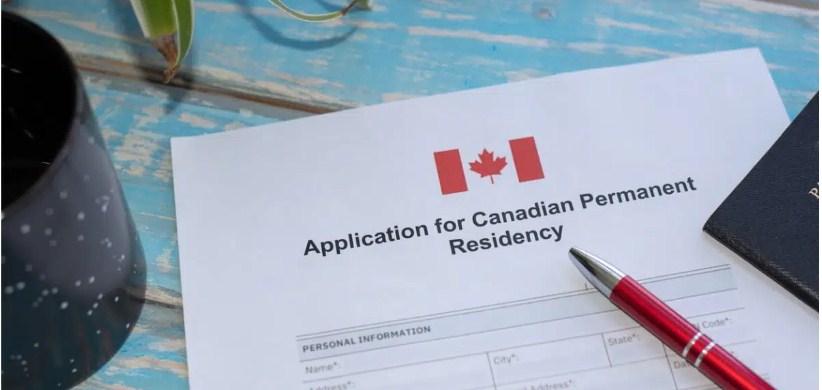n 2023, Canada welcomed 471,550 new permanent residents, a number that exceeded Immigration Refugees and Citizenship Canada‘s (IRCC’s) immigration levels plan for the year.
This large number of newcomers means that Canada’s immigration department must deal with hundreds of thousands of applications for permanent residence (PR) every year—in addition to work and study permit applications.
So, how does the department process these PR applications every year?
The process leading up to applying for PR
Before delving into how IRCC processes PR applications, it may be useful for newcomers to review what the process is before applying for PR.
Most important here is the idea that most PR programs (such as Express Entry managed programs, Provincial Nominee Programs (PNPs), and other economic programs) work on a “candidate—applicant” system. This means that newcomers first submit a candidate profile to the immigration department (for example through the Express Entry pool), and if they qualify, will be given an invitation to apply (ITA) for PR. Once newcomers submit their application after receiving an ITA, IRCC will then begin processing.
For Express Entry-managed programs (for example), this can be broken down into the following steps:
- Submit a candidate profile to the Express Entry pool;
- Receive an ITA; and
- Reply to the ITA with a PR application within the allotted 60-day time frame.
Note: Other immigration streams (such as family sponsorship) may skip the candidate process and move straight into the application processing phase.
How does IRCC process my applications for PR?
According to the Auditor General’s report on IRCC’s application processing, the way that the immigration department processes PR applications can be broken down into the following steps:
Receiving the application
This is the simple process of receiving a newcomer’s application after they respond to their ITA. A file is created in the department’s Global Case Management System (GCMS).
Verification and preparation of documents
In this phase, the department assesses whether all necessary documents have been provided (i.e.: police certificate, proof of funds, etc.). In addition, the department prepares documents here for the next step, where they will determine eligibility of the application. If any documents are missing or incomplete, IRCC says it will return the application to the applicant.
While some PR programs allow applicants to resubmit their application, if it is found incomplete, the Express Entry-managed programs (the Canadian Experience Class (CEC), the Federal Skilled Worker Program (FSWP) and the Federal Skilled Trades Program (FSTP)) do not. According to IRCC’s webpage, in these cases, applicants will have their application rejected, their fees refunded, and will need to restart the entire process.
Eligibility assessment
Here, the immigration department assesses the application against program standards, to make sure that all eligibility requirements and criteria are met. If an application fails here, IRCC will refuse the application outright, requiring applicants to restart the process..
Admissibility assessment
Within this phase, IRCC will evaluate whether an application meets admissibility criteria for PR. These are additional eligibility criteria wherein applicants must meet security and criminality checks, to be found eligible to come and settle in Canada.
In addition, applicants must pass an immigration medical exam to ensure that they do not have any healthcare-related issues that would put a strain on Canada’s socialised medical care system.
If applicants are found medically or criminally inadmissible, IRCC says it will refuse their application, requiring the applicant to start the entire process again.
Interview (if needed)
At this stage, an application is once again reviewed for basic eligibility and admissibility requirements.
If an interview is required, applicants will be asked to come to an IRCC office to speak with an immigration officer. According to IRCC topics discussed here could range from verifying information in the PR application, verifying an applicant’s (or their family’s) identity, and addressing any other concerns an officer may have around the application.
Under the three Express Entry-managed programs, selection criteria are more objective, usually resulting in the need for an interview being waived. Submitting a complete application maximises an applicant’s chances of not being called for an interview.
Success
If all the above steps are passed, an application will be found successful, and the applicant will receive PR status—after which they are free to arrive and settle in Canada. For more on what to do after receiving PR, find our dedicated webpage here.
How can I request more information on how my application is being processed?
Either before or after receiving a decision on your application, applicants to one of IRCC’s programs are free to request notes on how immigration officers are processing their application.
These notes are known as GCMS notes and are the default records the department keeps when processing an application through their system. The information available through these notes includes:
- When the application was opened by an immigration officer;
- The code of the immigration officer processing the application;
- Application status at the time of the request, and more.
For more information on receiving GCMS notes, find our dedicated webpage here.

